#architect's home france
Text
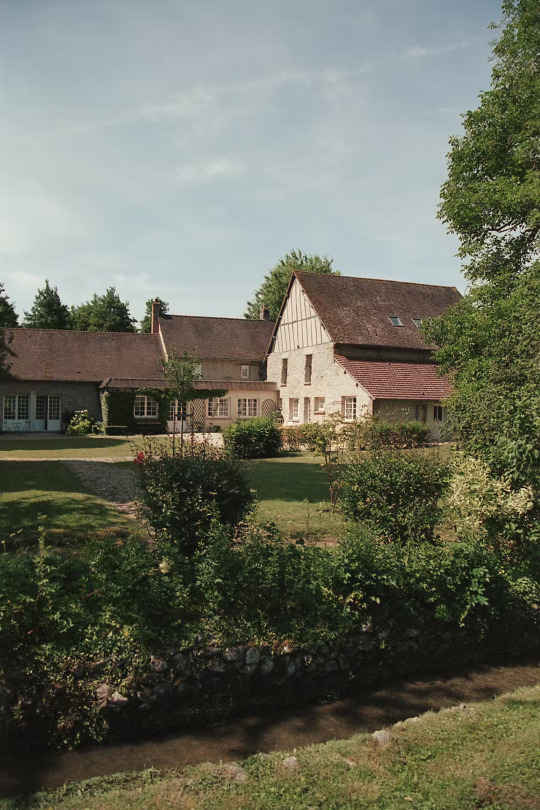
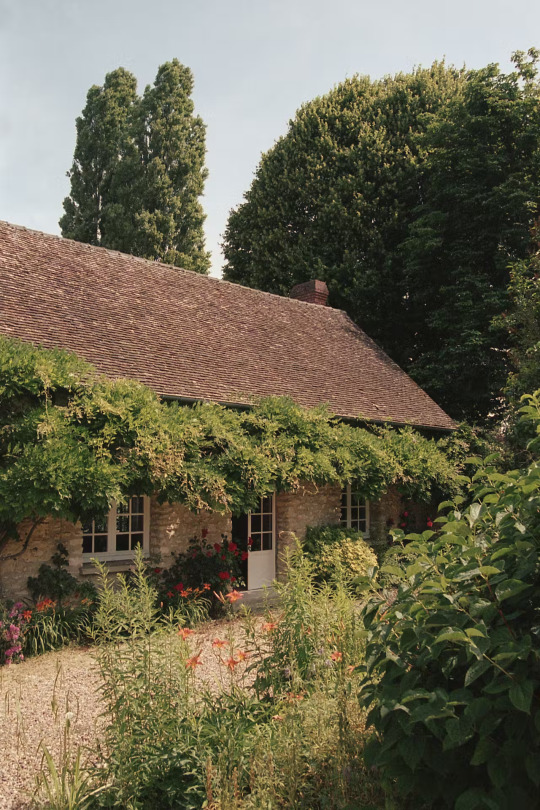


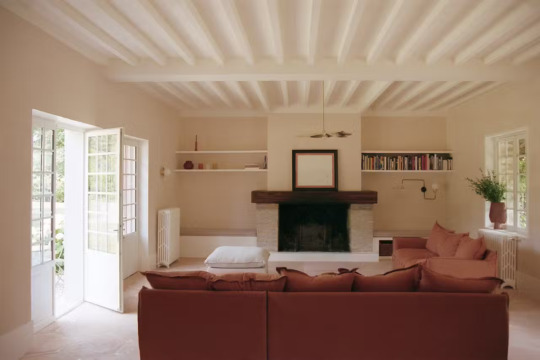


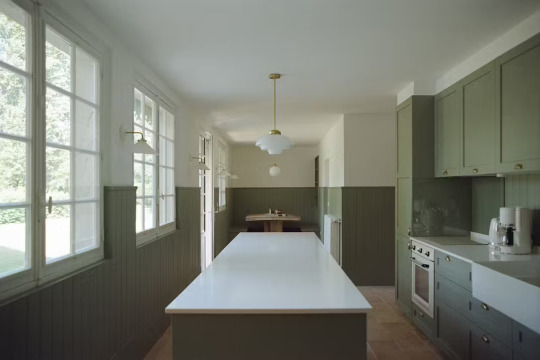


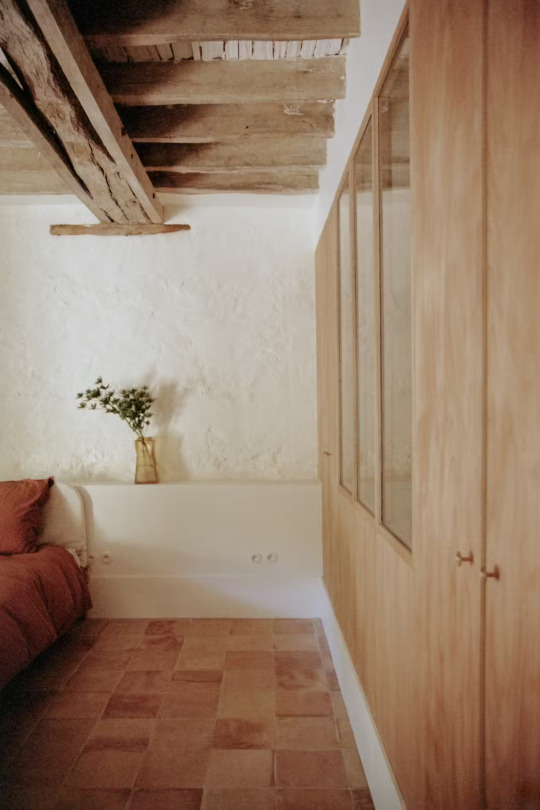
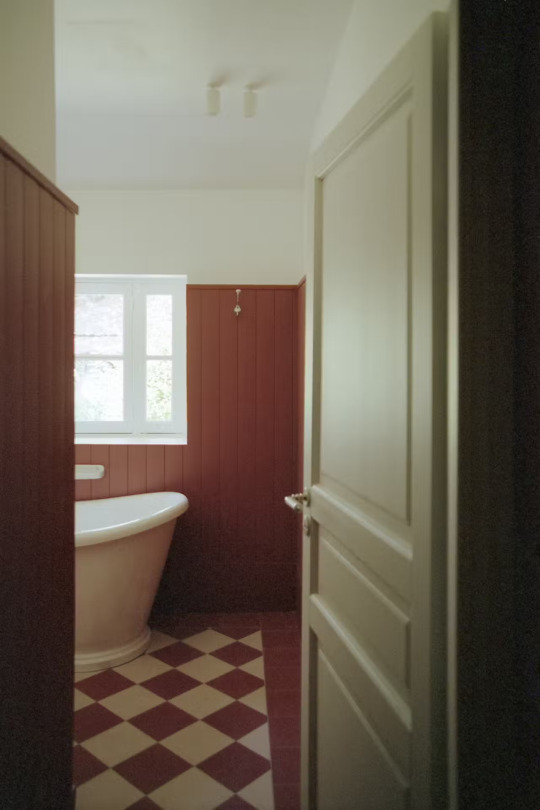



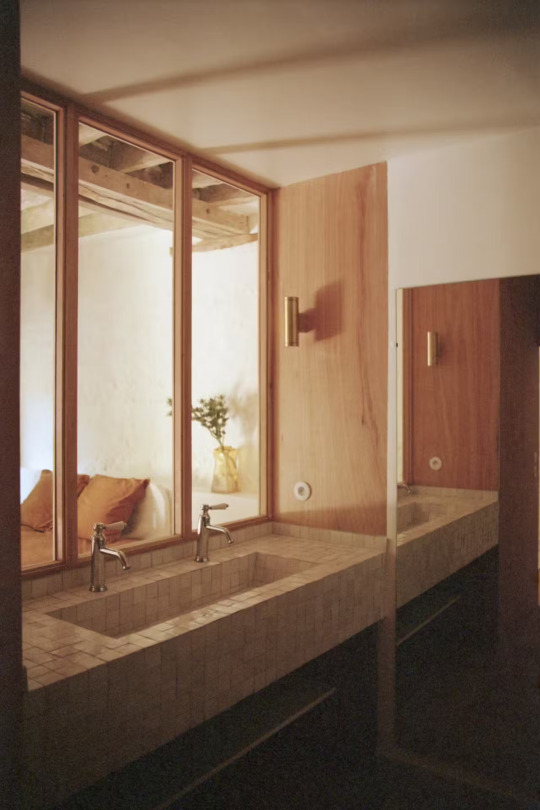
Rue du Pré, Boury-en-Vexin, France,
Courtesy: MM.NK Architects
#art#design#architecture#minimal#interior design#minimalism#luxury lifestyle#retreat#restauration#renovation#boury-en-vexin#france#MM.NK architects#country house#luxury house#luxury home
136 notes
·
View notes
Text
Luxury Cribs You Wouldn't Believe.
In reference to the title, you wouldn’t believe, because they aren’t real. When it comes to the visual side of architecture, it’s crucial that creators and builders alike can show what a “finished product” can look like before beginning construction. For that purpose, and that purpose alone they look amazing, they’re dope realizations of the imaginations, but using them as “digital Cribs”…

View On WordPress
#AI#Architects#Design#DJ Storm#DJ Storms Blog#France#Germany#Homes#Houses#London#Los Angels#Munich#Paris#Sweeden
0 notes
Text
I gave an interview in Turkish to the French CNews News Channel via Skype. The English translation is available below, and there are French subtitles in the video.
Yes, for example, we currently have several ongoing projects. One of them is our shopping mall project in Abidjan.
Another one is our luxury residence project in Cameroon. Apart from that, we also have a residence project in the Republic of Congo.
We have a tower project in the United States, a hotel project in Malta, and a hotel project in Mauritius.
In all of these projects, the design and decoration are entirely our responsibility. We also manufacture all the furniture and other items exclusively.
All productions are entirely done by us, and we deliver everything turnkey. For example, in our project in the United States, we design the building, as we do in Abidjan for our shopping mall.
We design the building itself in all these cases, and we deliver everything turnkey #sagistgroup #metindurmaz #cnews #france #luxuryfurniture
#sagistgroup#design#furniture#hotelfurniture#interior#decoration#luxury#architect#home#newyork#cnews#france
1 note
·
View note
Video
youtube
Nos Meilleures Réalisations d'Architecte Contemporain (2020-2021) - Vill...
1 note
·
View note
Text

Today, we're in the town of Clamart, just 20 minutes from the south of Paris, France, touring two adjoining houses designed by architect Jacques-Emile Lecaron: The “Maison d’Acier,” built in 1974, and the “Maison Derrière le Miroir,” renovated and connected to its neighbor in 2003.

I'm thinking that this purple structure joins the 2 homes together. It has 4/5 bds and private access to the Meudon forest. It's such a fun house that could be yours for €2.6M / $2.809M

And, you can go up into this cute little observatory.

This is cool- the living room is moveable- you can see the circle in the floor, that facilitates moving it around for different looks.

Here it is facing the library and dining area.

Here, they moved the shorter section in the middle to get some light.

The modern shiny kitchen cabinetry is purple and green.

The kitchen stretches along the windows in a wave.

The dining area is in front of the wall of windows with a rounded red cylindrical wall behind it. As you can see in the above photo, the back of it is in the kitchen and it's a staircase.

Off the kitchen is a den with library shelving, a music area, and seating. Notice the glass window in the floor.

The glass floor gives a view of the indoor pool below.

Meanwhile, the cylindrical stairs come up to this reading area.

Isn't this a fun purple and yellow sleep loft?

It has a desk and a roof of skylights. There are rolled-up canvas shades that cover the skylights to block the sun.

The primary bedroom has it's own ladder and loft, plus a door to a patio.

Isn't this nice?


It has beautiful gardens and all sorts of patios and terraces.

The rooftop deck is a fun place, too.
https://www.architecturedecollection.fr/en/product/steel-house-and-house-behind-the-mirror-jacques-emile-lecaron-architect-clamart/
209 notes
·
View notes
Text
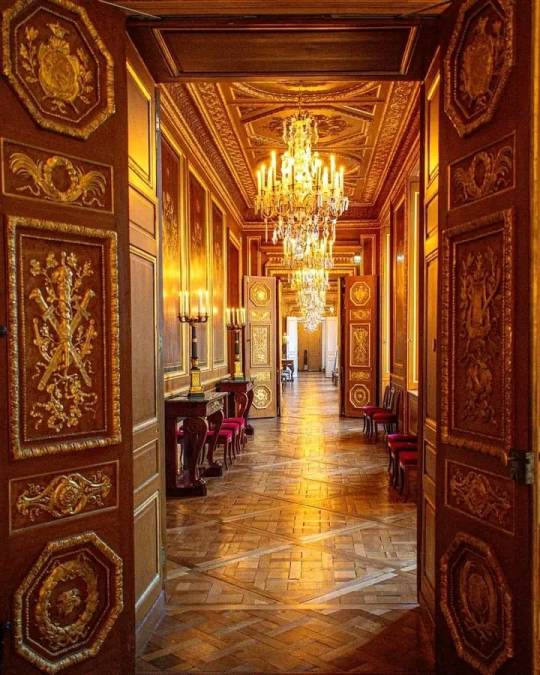
Hôtel du Garde-Meuble, Place de la Concorde, Paris, France
The Hôtel de la Marine was originally the home of the royal Garde-Meuble, the office managing the furnishing of all royal properties.
It was designed by the architect Ange-Jacques Gabriel and built between 1757 and 1774 on the newly created square first called Place Louis XV.
#art#design#architecture#history#luxury lifestyle#style#interior design#hotel particulier#place de la concorde#paris#france#royal#ange-jacques gabriel#louis XV#gallery
224 notes
·
View notes
Text




























Замок Миранда (Château Miranda)— замок 19-го века построенный в нео-готическом стиле в городе Сель, провинция Намюр, Бельгия. Строительство замка началось в 1866 году по проекту английского архитектора Эдварда Милнера. Замок был задуман как летняя резиденция семьи Liedekerke De Beaufort. Однако архитектор скончался до окончания постройки и замок достраивался уже без него. Окончание строительства произошло в 1907 году.Потомки старинного рода проживали там до Второй Мировой войны. Во время войны замок был оккупирован немецкими войсками.После войны владельцы решили перебраться во Францию, а их роскошный замок превратился сначала в детский дом, а с 1958 года - в дом отдыха для детей железнодорожников. Видимо, тогда он и получил свое второе название Chateau de Noisy (Шумный замок).
С 1991 года Миранда был заброшен, расходы на его содержание оказались непомерно высоки. Местный муниципалитет предложил взять их на себя, но семья отказалась, надеясь найти покупателя.Параллельно с поисками покупателя владельцем была подана просьба о сносе здания, в июле 2015 оно было получено. Средства на восстановление заброшенного замка требовались колоссальные, было организовано товарищество по спасению Миранды, но речь шла о сумме в 15-25 миллионов евро.Два года спустя покупатель так и не был найден, а отдать свой замок в дар государству не каждый способен...
"Замок превратился в руины и представляет собой реальную опасность для всех тех, кто незаконно вторгается в мою частную собственность" - так владелец объяснил уничтожение Miranda Castle.
Château Miranda is a 19th-century castle built in the neo-Gothic style in the town of Sel, Namur, Belgium. Construction of the castle began in 1866 according to the design of the English architect Edward Milner. The castle was conceived as the summer residence of the Liedekerke De Beaufort family. However, the architect died before the construction was completed and the castle was completed without him. The construction was completed in 1907. Descendants of the old family lived there until the Second World War. During the war, the castle was occupied by German troops. After the war, the owners decided to move to France, and their luxurious castle turned first into an orphanage, and since 1958 into a holiday home for children of railway workers. Apparently, it was then that it received its second name, Chateau de Noisy (Noisy Castle).
Since 1991, Miranda has been abandoned, the costs of its maintenance being prohibitive. The local municipality offered to take them over, but the family refused, hoping to find a buyer. In parallel with the search for a buyer, the owner submitted a request to demolish the building, which was received in July 2015. Colossal funds were required to restore the abandoned castle; a partnership was organized to save Miranda, but the amount in question was 15-25 million euros. Two years later, a buyer was never found, and not everyone is able to donate their castle to the state…
“The castle has turned into ruins and poses a real danger to all those who illegally invade my private property,” this is how the owner explained the destruction of Miranda Castle.
Источник:/poshyk.info/zabroshennye-zamki-mira/,/fishki.net/50746-zabroshennyj-zamok-chateau-miranda-52-foto.html,//dzen.ru/ a/ YWAhiQydDxQdRome,/steport.com/article/23/zabroshennyi-zamok-chateau-miranda,/pikabu.ru/story /zabroshennyiy_zamok _chateau _ miranda_gorod_sel_provintsiya_namyur_belgiya_5540122,/vk.com/album-43797049_205839158.
#Бельгия#история#заброшенные места#Заброшенное#Замок Миранда#архитектура#Неоготика#фотография#Belgium#history#abandoned#Architecture#Château Miranda#castle#Miranda Castle#Noisy Castle#neo-Gothic style#abandonedplaces#abandonedbuilding#abandoned photography#photography#lost in time
164 notes
·
View notes
Text






























"Unité d’Habitation / La Cité Radieuse", 280 Boulevard Michelet, 13008, Marseille, France [1947-52] _ Architect: Le Corbusier _ Photos by: Spyros Kaprinis [25.05.2024].
"The building takes the form of a housing bar 135 metres long, 24 metres wide, 56 metres high and mounted on stilts. Three hundred and thirty apartments, divided into twenty-three different types, can accommodate a population of between 1,500 and 1,700 occupants having at their disposal on the seventh and eighth floors a shopping street and a hotel-restaurant, together with a kindergarten and sports facilities on the roof terrace. The constructive principle adopted, the so-called “bottle rack”, consists in building apartments inside an independent frame of posts and reinforced concrete beams. The apartments are made up of standard elements assembled on the site. All the apartments are dual-aspect, except those on the south side. A sun-break loggia provides an open-air facility at the same time as limiting exposure to sunlight. Protected by double glazing, the apartment interiors are subject to the two basic rules of naval and monastic architecture: rationalism and simplicity. The living room, open on two levels, is the nucleus of the family “home”; upstairs the parents’ room occupies the mezzanine. The kitchen is equipped like a laboratory: electric cooker, refrigerator, rubbish chute and storage racks. The entire apartment is fitted with racks replacing traditional storage. The ventilation of the kitchen, bathroom and toilets is mechanically operated, while the entire apartment is supplied with clean air by an air conditioning system. These facilities were not found in the low-cost collective housing units of the time, and the standard surface areas of the Unité d’Habitation are greater than these by between 40% and 50%. The seventeen-storeys below the terrace are connected by eight interior streets which, given the overlap of the two-storey apartments, each serve three floors. Each street is accessed by a battery of four elevators complemented by a service elevator and three emergency staircases. The entire building and its equipment are designed in terms of the Modulor, the universal measuring unit conceived by Le Corbusier."
#Unité d’Habitation#La Cité Radieuse#Marseille#France#Le Corbusier#1947#1952#Spyros Kaprinis#2024#Concrete#Brutalism#Housing#Architecture
217 notes
·
View notes
Text
1968 [Chapter 6: Athena, Goddess Of Wisdom]

Series Summary: Aemond is embroiled in a fierce battle to secure the Democratic Party nomination and defeat his archnemesis, Richard Nixon, in the presidential election. You are his wife of two years and wholeheartedly indoctrinated into the Targaryen political dynasty. But you have an archnemesis of your own: Aemond’s chronically delinquent brother Aegon.
Series Warnings: Language, sexual content (18+ readers only), violence, bodily injury, character deaths, New Jersey, age-gap relationships, drinking, smoking, drugs, pregnancy and childbirth, kids with weird Greek names, historical topics including war and discrimination, math.
Word Count: 5.2k
Let me know if you’d like to be tagged! 🥰
💜 All of my writing can be found HERE! 💜
Here at the midway point in our journey—like Dante stumbling upon the gates of the Inferno—would it be the right moment to review what’s at stake? Let’s begin.
It’s the end of August. The delegates of the Democratic National Convention in Chicago officially vote to name Aemond the party’s presidential candidate. His ascension is aided by 10,000 antiwar demonstrators who flood into the city and threaten to set it ablaze if Hubert Humphrey is chosen instead. At the end—in his death rattle—Humphrey begs to be Aemond’s running mate, one last humiliation he cannot resist. Humphrey is denied. Eugene McCarthy, dignity intact, boards a commercial flight to his home state of Minnesota without looking back.
Aemond selects U.S. Ambassador to France, Sargent Shriver, to be his vice president. Shriver is a Kennedy by marriage—his wife, JFK’s younger sister Eunice, just founded the Special Olympics—and has previously headed the Office of Economic Opportunity, the Peace Corps, and the Chicago Board of Education. He also served as the architect of the president’s “War on Poverty” before distancing himself from the imploding Johnson administration. Shriver is not a concession to fence-sitting moderates or Southern Dixiecrats, but an embodiment of Aemond’s commitment to unapologetic progressivism. Richard Nixon spends the weekend campaigning in his native California, a gold vein of votes like the mines settlers rushed to in 1848. George Wallace announces that he will run as an Independent. Racists everywhere rejoice.
Phase III of the Tet Offensive is underway in Vietnam; 700 American soldiers have been killed this month alone. Riots break out in military prisons where the U.S. Army is keeping their deserters. The North Vietnamese refuse to allow Pope Paul VI to visit Hanoi on a peace mission. President Johnson calls both Aemond and Nixon to personally inform them of this latest evidence of the communists’ unwillingness to negotiate in good faith. Daeron and John McCain remain in Hỏa Lò Prison. The draft swallows men like the titan Cronus devoured his own children.
In Eastern Europe, the Russians are crushing pro-democracy protests in the largest military operation since World War II as half a million troops roll into Czechoslovakia. In Caswell County, North Carolina, the last remaining segregated school district in the nation is ordered by a federal judge to integrate after years of stalling. On the Fangataufa Atoll in the South Pacific, France becomes the fifth nation to successfully explode a hydrogen bomb. In Mexico City, 300,000 students gather to protest the authoritarian regime of President Diaz Ordaz. In Guatemala, American ambassador John Gordon Mein is murdered by a Marxist guerilla organization called the Rebel Armed Forces. In Columbus, Ohio, nine guards are held hostage during a prison riot; after 30 hours, they’re rescued by a SWAT team.
The latest issue of Life magazine brings worldwide attention to catastrophic industrial pollution in the Great Lakes. The first successful multiorgan transplant is carried out at Houston Methodist Hospital. The Beatles release Hey Jude, the best-selling single of 1968 in the U.S., U.K., Australia, and Canada. NASA’s Apollo lunar landing program plans to launch a crewed shuttle next year, just in time to fulfill John F. Kennedy’s 1962 promise to put a man on the moon “before the end of the decade.” If this is successful, the United States will win the Space Race and prove the superiority of capitalism. If it fails, the martyred astronauts will join all the other ghosts of this apocalyptic age, an epoch born under bad stars.
The night sky glows with the ancient debris of the Aurigid meteor shower. From down here on Earth, Jupiter is a radiant white gleam, visible with the naked eye and admired since humans were making cave paintings and Stonehenge. But Io is a mystery. With a telescope, she becomes a dust mote entrapped by Jupiter’s gravity; to the casual observer, she doesn’t exist at all.
~~~~~~~~~~
What was it like, that very first time? It’s strange to remember. You’re both different people now.
It’s May, 1966. You and Aemond are engaged, due to be married in three short weeks, and if you get pregnant then it’s no harm, no foul. In reality, it will end up taking you over a year to conceive, but no one knows that yet; you are living in the liminal space between what you imagine your life will be and the cold blade of the truth. Aemond has brought you to Asteria for the weekend, an increasingly common occurrence. The Targaryens—minus one, that holdout prodigal son, always glowering from behind swigs of rum and clouds of smoke—have already begun to treat you like a member of the family. The flock of Alopekis yap excitedly and lick your shins. Eudoxia learns your favorite snacks so she can have them ready when you arrive.
One night Aemond takes your hand and leads you to Helaena’s garden, darkness turned to twilight in the artificial luminance of the main house. You can hear distant voices, chatter and laughter, and the Beatles’ Rubber Soul spinning on the record player in the living room like a black hole, gravity that not even light can escape when it is wrenched over the event horizon.
You’re giggling as Aemond pulls you along, faster and faster, weaving through pathways lined with roses and sunflowers and butterfly bushes. Your high heels sink into soft, fertile earth; the air in your lungs is cool and infinite. “Where are we going?”
And Aemond grins back at you as he replies: “To Olympus.”
In the circle of hedges guarded by thirteen gods of stone, Aemond unzips your modest pink sundress and slips your heels off your feet, kneeling like he’s proposing to you again. When you are bare and secretless, he draws you down onto the grass and opens you, claims you, fills you to the brim as the crystalline water of the fountain patters and Zeus hurls his lightning bolts, an eternal storm, unending war. It’s intense in a way it never was with your first boyfriend, a sweet polite boy who talked about feminist theory and followed his enlightened conscience all the way to Vietnam. This isn’t just a pleasant way to pass a Friday night, something to look forward to between differential equations textbooks and calculus proofs. With Aemond it’s a ritual; it’s something so overpowering it almost scares you.
“Aphrodite,” Aemond murmurs against your throat, and when you try to get on top he stops you, pins you to the ground, thrusts hard and deep, and you try not to moan too loudly as you surrender, his weight on you like a prophesy. This is how he wants you. This is where you belong.
Has someone ever stitched you to their side, pushing the needle through your skin again and again as the fabric latticework takes shape, until their blood spills into your veins and your antibodies can no longer tell the difference? He makes you think you’ve forgotten who you were before. He makes you want to believe in things the world taught you were myths.
But that was over two years ago. Now Aemond is not your spellbinding almost-stranger of a fiancé—shrouded in just the right amount of mystery—but your husband, the father of your dead child, the presidential candidate. You miss when he was a mirage. You miss what it felt like to get high on the idea of him, each taste a hit, each touch a rush of toxins to the bloodstream.
Seven weeks after your emergency c-section, you are healing. Your belly no longer aches, your bleeding stops, you can rejoin the living in this last gasp of summer. Ludwika takes you shopping and you pick out new swimsuits; you’ve gone up a size since the baby, and it shows no signs of vanishing. In the fitting room, Ludwika chain-smokes Camel cigarettes and claps when you show her each outfit, ordering you to spin around, telling you that there’s nothing like Oleg Cassini back in Poland. You plan to buy three swimsuits. Ludwika insists you get five. She pays with Otto’s American Express.
That afternoon at home in your blue bedroom, you get changed to join the rest of the family down by the pool, your first swim since Ari was born. You choose Ludwika’s favorite: a dreamy turquoise two-piece with flowing transparent fabric that drapes your midsection. You can still see the dark vertical line of where the doctors stitched you closed. Now you and Aemond match; he got his scar on the floor of the Breakers Hotel in Palm Beach, you earned yours at Mount Sinai Hospital in Manhattan. There are gold chains on your wrist and looped around your neck. Warm sunlight and ocean wind pours in through the open windows.
Aemond appears in the doorway and you turn to show him, proud of how you’ve pulled yourself together, how this past year hasn’t put you in an asylum. His right eye catches on your scar and stays there for a long time. Then at last he says: “You don’t have something else to wear?”
~~~~~~~~~~
It’s Labor Day, and Asteria has been descended upon by guests invited to celebrate Aemond’s nomination. The dining room table is overflowing with champagne, Agiorgitiko wine, platters of mini spanakopitas, lamb gyros, pita bread with hummus and tzatziki, feta cheese and cured meats, grilled octopus, baklava, and kourabiethes. Eudoxia is rushing around sweeping up crumbs and shooing tipsy visitors away from antique vases shipped here from Greece. Aemond’s celebrity endorsers include Sammy Davis Jr., Sonny and Cher, Andy Williams, Bobby Darin, Warren Beatty, Shirley MacLaine, Claudine Longet, and a number of politicians; but the most notable attendee is President Lyndon Baines Johnson, shadowed by Secret Service agents. He won’t be making any surprise appearances on the campaign trail for Aemond—in the present political climate, he would be more of a liability than an asset—but he has travelled to Long Beach Island tonight to offer his well-wishes. From the record player thrums Jimi Hendrix’s All Along The Watchtower.
When you finish getting ready and arrive downstairs, you spot Aegon: slouching in a velvet chair over a century old, hair shagging in his eyes, sipping something out of a chipped mug he clasps with both hands, flirting with a bubbly early-twenties campaign staffer. Aegon smiles and waves when he sees you. You wave back. And you think: When did he become the person I look for when I walk into a room?
Now Aemond is beside you in a blue suit—beaming, confident, his glass eye in place, a hand resting on your waist—and Aegon isn’t smiling anymore. He takes a gulp of what is almost certainly straight rum from his mug and returns his attention to the campaign staffer, his lady of the hour. You picture him undressing her on his shag carpet and feel disorienting, violent envy like a bullet.
Viserys is already fast asleep upstairs, but the rest of the family is out en masse to charm the invitees and pose for photographs. Alicent, Helaena, and Mimi—trying very hard to act sober, blinking too often—are chit-chatting with the other political wives. Otto is complaining about something to Criston; Criston is pretending to listen as he stares at Alicent. Ludwika is smoking her Camels and talking to several young journalists who are ogling her, enraptured. Fosco and Sargent Shriver are entertaining a group of guests with a boisterous, lighthearted debate on the merits of Italian versus French cuisine, though they agree that both are superior to Greek. The nannies have brought the eight children to be paraded around before bedtime. All Cosmo wants to do is clutch your hand and “help” you navigate around the living room, warning you not to step on the small, weaving Alopekis. When Mimi attempts to steal her youngest son away, he ignores her, and as she begins to make a scene you rebuke her with a harsh glare. Mimi retreats meekly. She has never argued with you, not once in over two years. You speak for Aemond, and Aemond is a god.
As the children are herded off to their beds by the nannies, Bobby Kennedy—presently serving as a New York senator despite residing primarily on his family’s compound in Massachusetts—approaches to congratulate Aemond. His wife Ethel is a tiny, nasally, scrappy but not terribly bright woman, five months pregnant with her eleventh child, and you have to get away from her like a hand pulled from a hot stove.
“You know, I was considering running,” Bobby says to Aemond, chuckling, good-natured. “But when I saw you get in the race, I thought better of it! Maybe I’ll give it a go in ’76, huh?”
“Hey, kid, what a tough year you’ve had,” Ethel tells you, patting your forearm. You can’t tear your eyes from her small belly. She has ten living children already. I couldn’t keep one. What kind of sense does that make? “We’re real sorry for your trouble, aren’t we, Bobby?”
Now he is nodding somberly. “We are. We sure are. We’ve been praying for you both.”
Aemond is thanking them, sounding touched but entirely collected. You manage some hurried response and then excuse yourself. Your hands are shaking as you cross the room, not really seeing it. You walk right into Lady Bird Johnson. She takes pity on you; she seems to perceive how rattled you are. “Oh Lyndon, look, it’s just who we were hoping to speak to! The next first lady of the United States. And how beautiful you are, just radiant. How do you keep your hair so perfect? That glamorous updo. You never have a single strand out of place.” Lady Bird lays a palm tenderly on your bare shoulder. She has an unusual, angular face, but a wise sort of compassion that only comes from suffering. Her husband is an unrepentant serial cheater. “I’ll make you a list of everything you need to know about the White House. All the quirks of the property, and the hidden gems too!”
“You’re so kind. We’ll see what happens in November…”
“Good evening, ma’am,” President Johnson says, smiling warmly. He’s an ugly man, but there’s something hypnotic that lives inside him and shines through his eyes like the blaze of a lighthouse. He pulls you in through the dark, through the storm; he promises you answers to questions you haven’t thought of yet. LBJ is 6’4 and known for bullying his political adversaries with the so-called “Johnson Treatment”; he leans in and makes rapid-fire demands until they forget he’s not allowed to hit them. “I have to tell you frankly, I don’t envy anyone who inherits that den of rattlesnakes in Washington D.C.”
“Lyndon, don’t frighten her,” Lady Bird scolds fondly.
“Everyone thinks they know what to do about Vietnam,” LBJ plods onwards. “But it’s a damned if you do, damned if you don’t clusterfuck. If you keep fighting, they call you a murderer. But if you pull the troops out and South Vietnam falls to the communists, every single man lost was for nothing, and you think the families will stand for that? Their kid in a body bag, or his legs blown off, or his brain scrambled? There’s no easy answer. It’s a goddamn bitch of a quagmire.”
Lady Bird offers you a sympathetic smirk. Sorry about all this unpleasantness, she means. When he gets himself worked up, I can’t stop him. But you find yourself feeling sorry for President Johnson. It will be difficult for him to learn how to fade into disgraced obscurity after once being so omnipotent, so beloved. Reinvention hurts like hell: fevers raging, bones mending, healing flesh that itches so ferociously you want to claw it off.
LBJ gives Lady Bird a look, quick but meaningful. She acquiesces. This has happened a thousand times before. “It was so nice talking to you, dear,” she tells you, then crosses the living room to pay her respects to Alicent.
The president steps closer, looming, towering. The Johnson Treatment?? you think, but no; he isn’t trying to intimidate you. He’s just curious.
“Do you know what Aemond’s plan is for ‘Nam?” LBJ asks, eyes urgent, voice low. “I’m sure he has one. He’s sworn to end the draft as soon as he gets into office, but how is he going to make sure the South Vietnamese can fend off the North themselves? We’re trying to train the bastards, but if we left they’d fold in months. It would be the first war the U.S. ever lost. Does he understand that?”
“He doesn’t really discuss it with me.” That’s true; you know his policies, but only because they are a constant subject of conversation within the family, something you all breathe like oxygen.
“We can’t let Nixon win,” LBJ continues. “It’s mass suicide to leave the country in his hands. The man can’t hold his liquor anymore, getting robbed by Kennedy in ’60 broke something in him. He gets sloshed and shoves his aids around, makes up conspiracies in his head. He’s a paranoid little prick. He’ll surveille the American people. He’ll launch a nuke at Moscow.”
You honestly don’t know what he expects you to say. “I’ll pass the message along to Aemond.”
“People love you, Mrs. Targaryen.” LBJ watching you closely. “Believe it or not, they used to love me too. But I still remember how to play the game. You’re the only reason Aemond is leading the polls in Florida. You can get him other states too. Jack needed Jackie. Aemond needs you. And you’ve had tragedies, and that’s a damn shame. But don’t you miss an opportunity. You take every disappointment, every fucked up cruelty of life and find a way to make it work for you. You pin it to your chest like a goddamn medal. Every single scar makes you look more mortal to those people going to the ballot box in November. You want them to be able to see themselves in you. It helps the mansions and the millions go down smoother.”
“President Johnson!” Aegon says as he saunters over, huge mocking grin. He thumps a closed fist against the Texan’s broad chest; the Secret Service agents standing ten feet away observe this sternly. “How thoughtful of you to be here, taking time out of your busy schedule, squeezing us in between war crimes.”
“The mayor of Trenton,” LBJ jabs.
“The butcher of Saigon.”
Now the president is no longer amused. “You’ve never accomplished anything in your whole damn life, son. Your obituary will be the size of a postage stamp. I’m looking forward to reading it someday soon.” He leaves, rejoining Lady Bird at the opposite end of the room.
You frown at Aegon, disapproving. You’re dressed in a sparkling, royal blue gown that Aemond chose. “That was unnecessary.”
Aegon is wearing an ill-fitting green shirt—half the buttons undone—khaki pants, and tan moccasins. “I just did you a favor.”
“What happened to your new girlfriend? Shouldn’t she be getting railed in your basement right now? Did she have a prior commitment? Did she have a spelling test to study for? Those can be tricky, such complex words. Juvenile. Inappropriate. Infidelity.”
“You know what he brags about?” Aegon says, meaning LBJ. “That he’s fucked more women by accident than John F. Kennedy ever did on purpose.”
“That sounds…logistically challenging.”
“He’s a lech. He’s a freak. He tells everyone on Capitol Hill how big his cock is. He takes it out and swings it around during meetings.”
“And that’s all far less than admirable, but he’s not going to do something like that around me.”
“How do you know?”
“Because he’s not an idiot,” you say impatiently. “He was perfectly civil. And I was getting interesting advice.”
Aegon rolls his eyes, exasperated. “Yeah, okay, I’m sorry I crashed your cute little pep talk with Lyndon Johnson, the most hated man on the planet.”
“I guess you can’t stop Aemond from touching me, so you have to terrorize LBJ instead.”
“Shut the fuck up,” Aegon hisses, and his venom stuns you. And now you’re both trapped: you loosed the arrow, he proved you hit the mark. He’s flushing a deep, mortified red. Your guts are twisting with remorse.
“Aegon, wait, I didn’t mean—”
He whirls and storms off, shoving his way through the crowd. People glare at him as they clutch their glasses and plates, sighing in that What else do you expect from the worthless son? sort of way. You’re still gaping blankly at the place where Aegon stood when Aemond finds you, snakes a hand around the back of your neck, and whispers through the painstakingly-arranged wisps of hair that fall around your ear: “Follow me.”
It’s not a question. It’s a command. You trail him through the living room, into the foyer, and through the front door, not knowing what he wants. Outside the moon is a sliver; the light from the main house makes the stars hard to see. “Aemond, you’ll never believe the conversation I just had with LBJ. He really unloaded, I think the stress is driving him insane. I have to tell you what he said about—”
“Later.” And this is jarring; Aemond doesn’t put anything before strategy. He grabs your hand as he turns into Helaena’s garden, and only then do you understand what he wants. Instinctively, your legs lock up and your feet stop moving. Aemond tugs you onward. He wants it to be like the very first time. He intends to start over with you, the dawning of a new age in the dead of night.
Hidden in the circle of hedges, he takes your face roughly in his hands and kisses you, drinks you down like a vampire, consumes you like wildfire. But your skull echoes with panic. I don’t want him touching me. I don’t want another child with him. “Aemond…”
He doesn’t hear you, or acts like he doesn’t, or mistakes it for a murmur of desire, or chooses to believe it is. He has you down on the grass under the vengeful gaze of Zeus, the fountain splashing, the sounds of the house a low foreign drone. He yanks off your panties, but he doesn’t want you naked like he always did before. He pushes the hem of your shimmering cobalt gown up to your hips and unbuckles his trousers. And you realize as he’s touching you, as he’s easing himself into you: He doesn’t want to have to look at my scar.
You can’t ignore him, you can’t pretend it’s not happening. He’s too big for that. It’s a biting fullness that demands to be felt. So you kiss him back, and knot your fingers in his short hair like you used to, and try to remember the things you always said to him before. And when Aemond is too absorbed to notice, you look away from him, from the statue of Zeus, and peer up into the stone face of Athena instead: the goddess who never married and who knows the answer to every question.
“I love you,” Aemond says when it’s over, marveling at the slopes of your face in the dim ethereal light. “Everything will be right again soon. Everything will be perfect.”
You conjure up a smile and nod like you believe him.
“What did LBJ say?”
“Can I tell you later tonight? After the party, maybe? I just need a few minutes.”
“Of course.” And now Aemond pretends to be patient. He buckles his belt and returns to the main house, his blood coursing with the possibilities only you can make real, his skin damp with your sweat.
For a while—ten minutes, twenty minutes—you lie there on the cool grass wondering what it was like for all those mortals and nymphs, being pinned down by Zeus and then having Hera try to kill them afterwards, raising ill-fated reviled bastards they couldn’t help but love. What is heaven if the realm of the immortals is so cruel? Why does the god of justice seem so immune to it?
When at last you rise and walk back towards the house, you find Mimi at the edge of the garden. She’s on her knees and retching into a rose bush; she’s cut her face on the thorns, but she hasn’t noticed yet. She’s groaning; she seems lost.
You reach for her, gripping her bony shoulders. “Mimi, here, let’s get you upstairs…”
“No,” she blubbers, tears streaming down her scratched cheeks. “Just go away. Leave me.”
“Mimi—”
“No!” she roars, a mournful hemorrhage as she slaps your hands until you release her.
“You don’t have to be this way,” you tell her, distraught. “You can give up drinking. We’ll help you, me and Fosco and Ludwika. You can start over. You can be healthy and present again, you can live a real life.”
Mimi stares up at you, her grey eyes glassy and bloodshot but with a vicious, piercing honesty. “My husband hates me. My kids don’t know I exist. What the hell do I have to be sober for?”
You weren’t expecting this. You don’t know what to say. “We can help make the world better.”
“The world would be better without me in it.”
Then Mimi curls up on the grass under the rose bush, and stays there until you return with Fosco to drag her upstairs to her empty bed.
~~~~~~~~~~
The next afternoon, you’re lying on a lounge chair by the pool. Tomorrow the family will leave Asteria and embark upon a vigorous campaign schedule that will continue, with very few breaks, until Election Day on Tuesday, November 5th. The children are splashing and shrieking in the pool with Fosco, but you aren’t looking at them. You’re staring across the sun-drenched emerald lawn at the Atlantic Ocean. You’re envisioning all the bones and splinters of sunken ships that must litter the silt of the abyss; you’re thinking that it’s a graveyard with no headstones, no memory. Your swimsuit is a red one-piece. Your eyes are shielded by large black Ray Bans aviator sunglasses. Your gaze flicks up to the cloudless blue sky, where all the stars and planets are invisible.
Jupiter has nearly a hundred moons; the largest four were discovered by Galileo in 1610. Europa is a smooth white cosmic marble with a crust of ice, beautiful, immaculate. Ganymede, the largest moon in our solar system and the only satellite with its own magnetic field, is rumored to have a vast underground saltwater ocean that may contain life. Callisto is dark and indomitable, riddled with impact craters; because of her dynamic atmosphere and location beyond Jupiter’s radiation belts, she is considered the best location for possible future crewed missions to the Jovian system. But Io is a wasteland. She has no water and no oxygen. Her only children are 400 active volcanoes, sulfur plumes and lava flows, mountains of silicate rock higher than Mount Everest, cataclysmic earthquakes as her crust slips around on a mantle of magma. Her daily radiation levels are 36 times the lethal limit for humans. If Hades had a home in our corner of the galaxy, it would be Io. She glows ruby and gold with barren apocalyptic fury. You can feel yourself turning poisonous like she is. You can feel your skin splitting open as the lava spills out.
Aegon trots out of the house—red swim trunks, cheap red plastic sunglasses, no shirt, a beach towel slung around his neck, flip flops—and kicks your chair. “Get up. We’re going sailing.”
“I don’t want to talk to anybody.”
“Great, because I’m not asking you to talk. I’m telling you to get in my boat.”
You don’t reply. You don’t think you can without your voice cracking. Aegon crouches down beside your chair and pushes your sunglasses up into your Brigitte Bardot-inspired hair so he can see your face. Your eyes are pink, wet, desperately sad. Deep troubled grooves appear in his forehead as he studies you. Gently, wordlessly, he pats your cheek twice and lowers your sunglasses back over your eyes. Then he stands up again and offers you his hand.
“Let’s go,” Aegon says, softly this time. You take his hand and follow him down to the boathouse.
Five vessels are currently kept there. Aegon’s sailboat is a 25-foot Wianno Senior sloop, just roomy enough for a few passengers. He’s had it since long before you married into the Targaryen family. It is white with hand-painted gold accents; the name Sunfyre adorns the stern. He unmoors the boat, pushes it out into the open water, and raises the sails.
You glide eastbound over the glittering crests of waves, slowly at first, then faster as the sails catch the wind. Aegon has one hand on the rudder, the other grasping the ropes. And the farther you get from shore, the smaller Asteria seems, and the Targaryen family, and the presidential election, and the United States itself. Now all that exists is this boat: you, Aegon, the squawking gulls, the school of mackerel, the ocean. The sun beats down; the breeze rips strands of your hair free. The battery-powered record player is blasting White Room by Cream. When you are far enough from land that no journalists would be able to get a photo, Aegon takes two joints and his Zippo out of the pocket of his swim trunks. He puts both joints between his lips, lights them, and passes you one. Then he stretches out beside you on the deck, gazing up at the September sky.
You ask as your muscles unravel and your thoughts turn light and easy to share: “Why did you bring me out here?”
“So you can drown yourself,” Aegon says, and you both laugh. “Nah. I used to go sailing all the time when I was a teenager. It always made me feel better. It was the only place where I could really be alone.”
You consider the math. “Wow. You haven’t been a teenager since before I was in kindergarten.”
“It’s weird to think about. You don’t seem that young.”
“Thanks, I guess. You don’t seem that old.”
“Maybe we’re meeting in the middle.” He inhales deeply and then exhales in a rush of smoke. “What do you think, should I get an earring?”
“Yeah.”
“Why?”
“It might shock Otto so bad it kills him.”
“I’ll get two.” And then Aegon says: “It’s not cool for you to mock me.”
You are dismayed; you didn’t mean to hurt him. “I wasn’t.”
“Yes, you were. You were mocking me. You mocked me about the receipt under my ashtray, and then you mocked me again last night. I’m up for a lot of things, but I can’t handle that. Okay?”
“Okay.” You turn your head so you can see him: shaggy blonde hair, stubble, perpetual sunburn, the softness of his belly and his chest, flesh you long to vanish into like rain through parched earth. “Aegon?”
He looks over at you. “Io?”
“I don’t want Aemond to touch me either.”
He’s surprised; not by what you feel, but because you’ve said it aloud, a treason like Prometheus giving mankind the gift of fire. “What are we gonna do about it?”
If you were the goddess of wisdom, maybe you’d know.
#aegon ii targaryen#aegon targaryen#aegon targaryen ii#aegon ii#aegon targaryen x reader#aegon x reader#aegon ii x y/n#aegon ii x you#aegon ii targaryen x reader#aegon ii x reader#aegon ii fanfic#aegon ii fic
249 notes
·
View notes
Text


























Appuldurcombe House
Hi guys!!
I'm sharing Appuldurcombe House (abandoned/in ruins). This is the 20th building for my English Collection.
I decorated most of the house ground floor, for reference.
History of the house:
Appuldurcombe House is the shell of a large 18th-century English Baroque country house of the Worsley family. The house is situated near to Wroxall on the Isle of Wight, England. It is now managed by English Heritage and is open to the public. A small part of the 300-acre (1.2 km2; 0.47 sq mi) estate that once surrounded it is still intact, but other features of the estate are still visible in the surrounding farmland and nearby village of Wroxall, including the entrance to the park, the Freemantle Gate, now used only by farm animals and pedestrians.
Appuldurcombe began as a priory in 1100. It became a convent, then the Elizabethan home of the Leigh family. The large Tudor mansion was bequeathed in 1690 to Sir Robert Worsley, 4th Baronet, who began planning a suitable replacement.
The present house was begun in 1702. The architect was John James. Sir Robert never saw the house fully completed. He died on 29 July 1747; in his memory a monument was erected overlooking the house on Stenbury Down.
The house was greatly extended in the 1770s by his great-nephew Sir Richard Worsley, 7th Baronet Worsley of Appuldurcombe.
Worsley had left the estate saddled with heavy debts, but Appuldurcombe passed to his niece, Henrietta Anna Maria Charlotte (daughter of John Bridgeman Simpson). She married the Hon. Charles Anderson-Pelham, later first Earl of Yarborough, in 1806. The founder of the Royal Yacht Squadron at Cowes, he made few changes to the house and was quite happy to retain the property as a convenient base for his sailing activities.
Appuldurcombe House circa 1910
In 1855 the estate was sold. An unsuccessful business venture ran Appuldurcombe as a hotel, but with its failure, the house was then leased as Dr Pound's Academy for young gentlemen.
Advertisement for Appuldurcombe College 1889
Advertisement for Appuldurcombe College in the Times, London, April 19, 1889
The house was inhabited in 1901–1907 by a hundred Benedictine monks who had been exiled from Solesmes Abbey in France and were shortly to settle at Quarr Abbey on the Isle of Wight.
Although the house is now mainly a shell, its front section has been re-roofed and glazed, and a small part of the interior recreated. The house has become well known as one of the supposedly most haunted places on the island.
More history: https://en.wikipedia.org/wiki/Appuldurcombe_House
------------------------------------------------------------------------------
This house fits a 64X64 lot, but it coulf fit a 50x50 too.
I only decorated some of the important rooms. All the rest of the house is up to your taste to decor.
Hope you like it.
You will need the usual CC I use:
all Felixandre cc
all The Jim
SYB
Anachrosims
Regal Sims
King Falcon railing
The Golden Sanctuary
Cliffou
Dndr recolors
Harrie cc
Tuds
Lili's palace cc
Please enjoy, comment if you like the house and share pictures of your game!
Follow me on IG: https://www.instagram.com/sims4palaces/
@sims4palaces
Ealry acces: October 20
DOWNLOAD: https://www.patreon.com/posts/appuldurcombe-112466692
#sims 4 architecture#sims 4 build#sims4#sims 4 screenshots#sims4building#sims 4 historical#sims4play#sims4palace#sims 4 royalty#ts4#ts4 download#ts4 simblr#ts4 gameplay#ts4 screenshots#sims 4#the sims 4#ts4 legacy#sims4 build#sims 4 gameplay#thesims4
63 notes
·
View notes
Photo


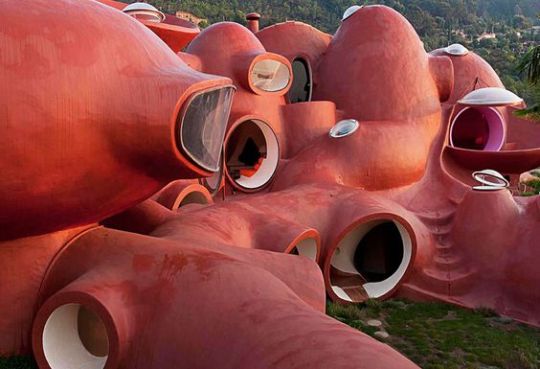

Palais Bulles ("Bubble Palace") is a large house in Théoule-sur-Mer, near Cannes, France, that was designed by the Hungarian architect Antti Lovag, and built between 1975 and 1989. It was built for a French industrialist, and was later bought by the fashion designer Pierre Cardin as a holiday home.
545 notes
·
View notes
Text

1922 Backyard garden at the home of architect Amar Emburg II, at 150 East 61st Street. Photo by Frances Benjamin Johnson. From New York City-Vintage History, FB.
81 notes
·
View notes
Text
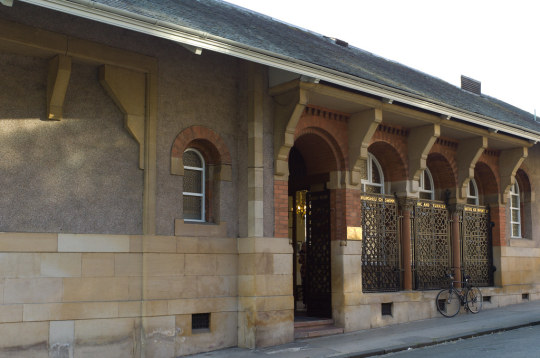
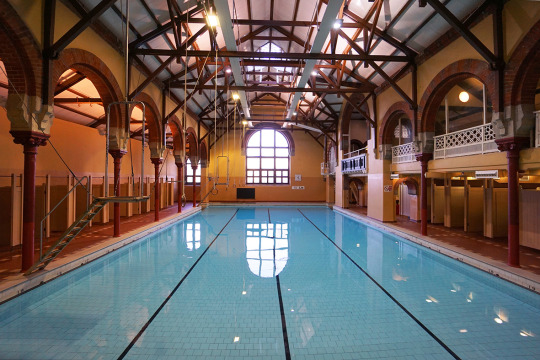
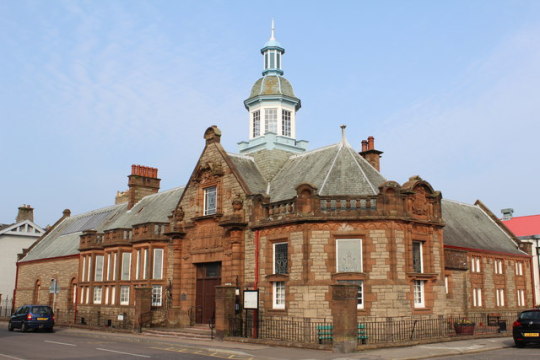
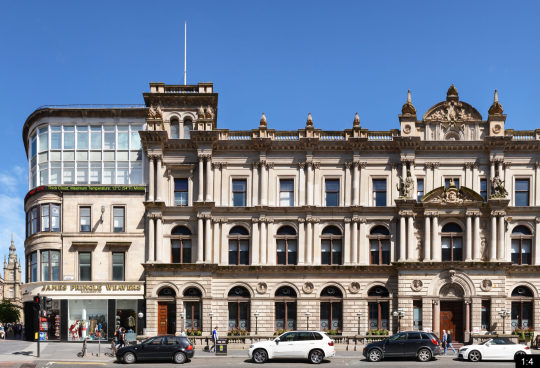
The distinguished architect John Burnett died on July 2nd 1938 at Colinton, Edinburgh.
Burnett designed buildings the length and breadth of the British Isles and on the continent of Europe and as far afield as South Africa.
John Burnet was born a soldier's son at Craighead House, Kirk O' Shotts, and trained initially as a carpenter. After becoming a Clerk of Works, he set up as an architect specializing in modest churches and houses in the Italianate and Classical styles, and large-scale commercial buildings and hospitals in the Italian Renaissance, Baronial and Gothic styles.
One of his first undertakings in Glasgow was the Royal Institute of the Fine Arts in Sauchiehall Street, which was won by competition. Other notable buildings there are the offices of the Clyde Trust, the Athenaeum, the Botanical Department and extension of the University, the Pathological Institute, the Barony Church.
In Edinburgh he designed the Professional and Civil Service Stores, George Street, the business premises of R. W. Forsyth in Princes Street, which later housed Burtons for many years, and in Scotland and England generally many public, ecclesiastical and domestic buildings. He was also architect for the Edinburgh International Exhibition of 1906.
Important commissions came to him from London and to London he devoted the latter part of his life, the firm, of which he was senior partner, being known as Sir John Burnet, Tait & Lorne. He had the honour in 1905 of being entrusted by the Government with the important additions to the British Museum, now known as the King Edward VII. Galleries.
Among his numerous London designs are the Institute of Chemistry in Russell Square, the Kodak building in Kingsway, Adelaide House and Vigo House, and the Second Church of Christ Scientist. He was the chief architect in Palestine and Gallipoli for the Imperial War Graves Commission.
The professional esteem with which Sir John was regarded in Britain may be expressed by the words used in connection with the conferring of the Gold Medal of the Royal Institute of British Architects in 1923, ‘‘ Few architects living can compare with him either in quantity or quality of output, and fewer still may be said to have had as pervasive an influence on the work of their own time.”
In France he had received both bronze and gold medals at the Salon and was a corresponding member of the Institute of France and of the Société central des Architectes Francais. He had the same relation with the American Institute of Architects.
Knighted in 1914, Sir John was a member of both the Royal Scottish Academy and the Royal Academy. He was an Honorary LL.D., of Glasgow and Fellow of the Royal Institute of British Architects, of the Royal Society, Edinburgh, and of the Royal Society of Antiquaries.
Though he took fewer commissions personally, Burnet worked into his late seventies – he designed the famous Unilever building on London in 1933 - before he eventually retired, spending his final years at Colinton in Edinburgh. He died at home at the age of 81 on this day, 1938, he is buried at Warriston Cemetery.
Pics are the beutiful Drumsheugh Baths in Edinburgh, the old Public Library and Museum, Capbelltown and the former Clydesdale Bank Headquarters, St Vincent Place, Glasgow.
28 notes
·
View notes
Text
ARTICLE: "How to stay friends when you're F1 rivals" (Autosport Plus, 2019)
There's always one, isn't there? Just after you've comfortably settled into your seat, clicked the seatbelt across your lap, and are scanning for a decent film on the seat's screen in front of you - someone asks you to move.
It was on the late-night flight out of Bahrain after this year's race that F1 Racing became aware of such a scenario unfolding: passengers being politely asked if they wouldn't mind moving seats so two chums could take up seats together. The architects of this kerfuffle, the two friends who became reunited at 30,000 feet, were none other than Pierre Gasly and Charles Leclerc.
"We grew up together," explains Gasly. "We first met in 2005, when I was about nine and our parents became really close. As families, we spent holidays, staying on boats together in the south of France and five years later we became team-mates in karting. That year I probably spent more time with Charles than I did with my own parents.
"One of my first F1 memories was when I went to visit Charles at his Monaco home during the grand prix weekend. His parents' house was miles away from the track and yet I could hear the cars, 3-litre V10s, in morning practice. We were so far from the circuit - yet it was super impressive."
Perhaps it was no surprise Gasly was so enchanted by the sound of a racing engine, as he comes from a family steeped in motorsport. In fact, he is the third generation of Gasly to become successful on four wheels.
"I don't think a lot of people know this, but my grandmother, Yveline Gasly, was a karting champion. My father was also a racer in karting, rallying and in endurance events - and a French champion too. I also have four older brothers and three of them raced in karting.
"So, from three years of age, my mother used to take me in a buggy that she pushed around and I would make engine noises. From a very young age, I was always part of motorsport."
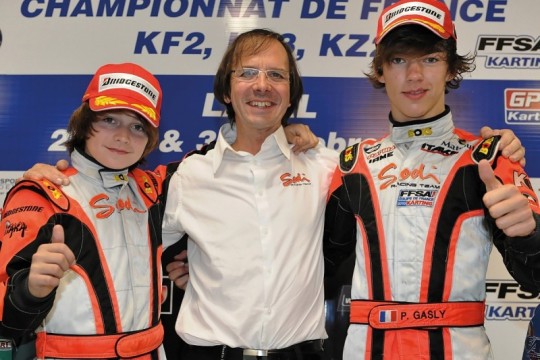
Gasly won the French karting championship in 2010 driving for Sodikart when he was team-mate to his younger friend Leclerc, who was runner-up that year. It is the pictures of the two of them together (aged 14 and 13) that Gasly has shared with F1 Racing this month.
"We had a really good fight for the championship and it was a good time testing on tracks together and racing," says Gasly. "Although I moved on to single-seaters before Charles, we still have a very close friendship as he's a nice, kind guy."
Fifteen years after they first met the pair find themselves racing together in Formula 1, and following their recent graduation to Red Bull and Ferrari, they could easily find themselves sharing a podium once more.
In the early part this year, it's been Leclerc that has made more of an impression with his assured performances for Ferrari, while Gasly admits he still isn't yet fully comfortable behind the wheel of the Red Bull RB15.
Pre-season was blighted by two large accidents in testing and it's taken him time to get up to speed.
"It's fair to say that I don't feel as comfortable in the Red Bull as I was in the Toro Rosso last year," concedes Gasly. "In a way I found a direction quickly in the Toro Rosso to get the best out of it.
"But I've found it's a bit tricky in the Red Bull. I don't feel I can have the input I want inside the cockpit - it's quite inconsistent. It doesn't do what I expect it to do in one corner and then in another it's different again. The main thing is trying to drive the car as I would like it to be."

The environment at Red Bull is notably pressurised, as former drivers and power unit suppliers will attest, but Gasly hopes he will be afforded the time to adapt. Before the season began, team boss Christian Horner admitted Gasly has been "elevated 12 months before we'd ideally like" but more recently suggested his confidence had been growing.
"He had a tough pre-season, with the two incidents in testing putting him on the back foot, but at each grand prix he's got stronger and stronger," says Horner.
"I think more seat time will be extremely beneficial to him and as we come back to circuits that he's more familiar with, I think we'll see him make further progress."
The continuity for Gasly after his first full season at Toro Rosso has been the Honda power unit - which Red Bull is using for the first time in 2019. In addition, his engine engineer has moved over from Faenza to Milton Keynes with him.
Gasly has a familiarity with the Japanese manufacturer's working practices and culture, learning much when he spent most of 2017 racing in Super Formula in Japan.

Gasly made a surprise F1 debut in Malaysia that year when Daniil Kvyat was dropped by Toro Rosso, and he was surprised again when he was promoted to Red Bull for this season when Daniel Ricciardo made his unexpected decision to quit the team for Renault.
"When [Red Bull consultant] Dr Marko called me I could not believe it," says Gasly about the turn of events last August that led to his drive at RBR.
"I was so sure he [Ricciardo] was going to stay at Red Bull. At first Marko told me they were going to take their time and look at the options for next year - he said to enjoy the summer break and to try and disconnect from everything.
"Of course, it's not possible when you have something like a Red Bull drive in your mind.
I was waiting and there were two clear options, either to stay at Toro Rosso or move to Red Bull. Then Helmut called me back about two weeks later to say they had decided to take me for this year and that they thought I was the best option for the team for 2019."
Gasly's promotion has pitched him as a direct rival to his old friend Leclerc, but don't expect their on-track duel to come between their friendship. Indeed, don't be surprised to see the pair holidaying together again this year.
"We still text a lot, although it's harder now with our agendas to organise things, but every year we try and plan a trip away together in the summer," says Gasly. "It didn't happen last year, but we'll try again this year."
Better make sure they book the plane tickets at the same time then, to avoid any more last-minute seat-swapping...

31 notes
·
View notes
Text
One of the main themes of The Count of Monte Cristo is the balance between Justice and Vengeance, keeping things under control. He happens to doubt, and he thinks, but he does not lose himself in the vengeance.
"And now," said the unknown, "farewell kindness, humanity, and gratitude! Farewell to all the feelings that expand the heart! I have been Heaven’s substitute to recompense the good—now the god of vengeance yields to me his power to punish the wicked!"
– Chapter 30: The Fifth of September
The count bowed, and contented himself with seeing Villefort to the door of his cabinet, the procureur being escorted to his carriage by two footmen, who, on a signal from their master, followed him with every mark of attention. When he had gone, Monte Cristo breathed a profound sigh, and said:
"Enough of this poison, let me now seek the antidote."
Then sounding his bell, he said to Ali, who entered:
"I am going to madame’s chamber—have the carriage ready at one o’clock."
– Chapter 48: Ideology
"What have I to fear, except from you?"
"If you reach your home safely, leave Paris, leave France, and wherever you may be, so long as you conduct yourself well, I will send you a small annuity; for, if you return home safely, then—"
"Then?" asked Caderousse, shuddering.
"Then I shall believe God has forgiven you, and I will forgive you too."
– Chapter 82: The Burglary
"Oh, enough of this,—enough of this," he cried; “let me save the last."
– Chapter 111: Expiation
The count departed with a sad heart from the house in which he had left Mercédès, probably never to behold her again. Since the death of little Edward a great change had taken place in Monte Cristo. Having reached the summit of his vengeance by a long and tortuous path, he saw an abyss of doubt yawning before him. More than this, the conversation which had just taken place between Mercédès and himself had awakened so many recollections in his heart that he felt it necessary to combat with them. A man of the count’s temperament could not long indulge in that melancholy which can exist in common minds, but which destroys superior ones. He thought he must have made an error in his calculations if he now found cause to blame himself.
"I cannot have deceived myself," he said; "I must look upon the past in a false light. What!" he continued, "can I have been following a false path?—can the end which I proposed be a mistaken end?—can one hour have sufficed to prove to an architect that the work upon which he founded all his hopes was an impossible, if not a sacrilegious, undertaking? I cannot reconcile myself to this idea—it would madden me. The reason why I am now dissatisfied is that I have not a clear appreciation of the past. The past, like the country through which we walk, becomes indistinct as we advance. My position is like that of a person wounded in a dream; he feels the wound, though he cannot recollect when he received it."
– Chapter 113: The Past
The count breathed with difficulty; the cold drops ran down his forehead, and his heart was full of anguish.
"No," he muttered, "the doubt I felt was but the commencement of forgetfulness; but here the wound reopens, and the heart again thirsts for vengeance."
– Chapter 113: The Past
"Yes," he said, "there is the stone upon which I used to sit; there is the impression made by my shoulders on the wall; there is the mark of my blood made when one day I dashed my head against the wall. Oh, those figures, how well I remember them! I made them one day to calculate the age of my father, that I might know whether I should find him still living, and that of Mercédès, to know if I should find her still free. After finishing that calculation, I had a minute’s hope. I did not reckon upon hunger and infidelity!" and a bitter laugh escaped the count.
He saw in fancy the burial of his father, and the marriage of Mercédès. On the other side of the dungeon he perceived an inscription, the white letters of which were still visible on the green wall:
"‘Oh, God!’" he read, "‘preserve my memory!’"
"Oh, yes," he cried, "that was my only prayer at last; I no longer begged for liberty, but memory; I dreaded to become mad and forgetful. Oh, God, thou hast preserved my memory; I thank thee, I thank thee!"
– Chapter 113: The Past
"Oh, second father," he exclaimed, "thou who hast given me liberty, knowledge, riches; thou who, like beings of a superior order to ourselves, couldst understand the science of good and evil; if in the depths of the tomb there still remain something within us which can respond to the voice of those who are left on earth; if after death the soul ever revisit the places where we have lived and suffered,—then, noble heart, sublime soul, then I conjure thee by the paternal love thou didst bear me, by the filial obedience I vowed to thee, grant me some sign, some revelation! Remove from me the remains of doubt, which, if it change not to conviction, must become remorse!" The count bowed his head, and clasped his hands together.
"Here, sir," said a voice behind him.
Monte Cristo shuddered, and arose. The concierge held out the strips of cloth upon which the Abbé Faria had spread the riches of his mind. The manuscript was the great work by the Abbé Faria upon the kingdoms of Italy. The count seized it hastily, his eyes immediately fell upon the epigraph, and he read:
"Thou shalt tear out the dragons’ teeth, and shall trample the lions under foot, saith the Lord."
– Chapter 113: The Past
"Do you repent?" asked a deep, solemn voice, which caused Danglars’ hair to stand on end. His feeble eyes endeavored to distinguish objects, and behind the bandit he saw a man enveloped in a cloak, half lost in the shadow of a stone column.
"Of what must I repent?" stammered Danglars.
"Of the evil you have done," said the voice.
"Oh, yes; oh, yes, I do indeed repent." And he struck his breast with his emaciated fist.
"Then I forgive you,” said the man, dropping his cloak, and advancing to the light.
"The Count of Monte Cristo!" said Danglars, more pale from terror than he had been just before from hunger and misery.
"You are mistaken—I am not the Count of Monte Cristo."
"Then who are you?"
"I am he whom you sold and dishonored—I am he whose betrothed you prostituted—I am he upon whom you trampled that you might raise yourself to fortune—I am he whose father you condemned to die of hunger—I am he whom you also condemned to starvation, and who yet forgives you, because he hopes to be forgiven—I am Edmond Dantès!"
– Chapter 116: The Pardon
16 notes
·
View notes
Text






























"Unité d’Habitation / La Cité Radieuse", 280 Boulevard Michelet, 13008, Marseille, France [1947-52] _ Architect: Le Corbusier _ Photos by: Spyros Kaprinis [25.05.2024].
"The building takes the form of a housing bar 135 metres long, 24 metres wide, 56 metres high and mounted on stilts. Three hundred and thirty apartments, divided into twenty-three different types, can accommodate a population of between 1,500 and 1,700 occupants having at their disposal on the seventh and eighth floors a shopping street and a hotel-restaurant, together with a kindergarten and sports facilities on the roof terrace. The constructive principle adopted, the so-called “bottle rack”, consists in building apartments inside an independent frame of posts and reinforced concrete beams. The apartments are made up of standard elements assembled on the site. All the apartments are dual-aspect, except those on the south side. A sun-break loggia provides an open-air facility at the same time as limiting exposure to sunlight. Protected by double glazing, the apartment interiors are subject to the two basic rules of naval and monastic architecture: rationalism and simplicity. The living room, open on two levels, is the nucleus of the family “home”; upstairs the parents’ room occupies the mezzanine. The kitchen is equipped like a laboratory: electric cooker, refrigerator, rubbish chute and storage racks. The entire apartment is fitted with racks replacing traditional storage. The ventilation of the kitchen, bathroom and toilets is mechanically operated, while the entire apartment is supplied with clean air by an air conditioning system. These facilities were not found in the low-cost collective housing units of the time, and the standard surface areas of the Unité d’Habitation are greater than these by between 40% and 50%. The seventeen-storeys below the terrace are connected by eight interior streets which, given the overlap of the two-storey apartments, each serve three floors. Each street is accessed by a battery of four elevators complemented by a service elevator and three emergency staircases. The entire building and its equipment are designed in terms of the Modulor, the universal measuring unit conceived by Le Corbusier."
#Unité d’Habitation#La Cité Radieuse#Marseille#France#1947#1952#Le Corbusier#2024#Spyros Kaprinis#Concrete#Brutalism#Housing#Architecture
142 notes
·
View notes